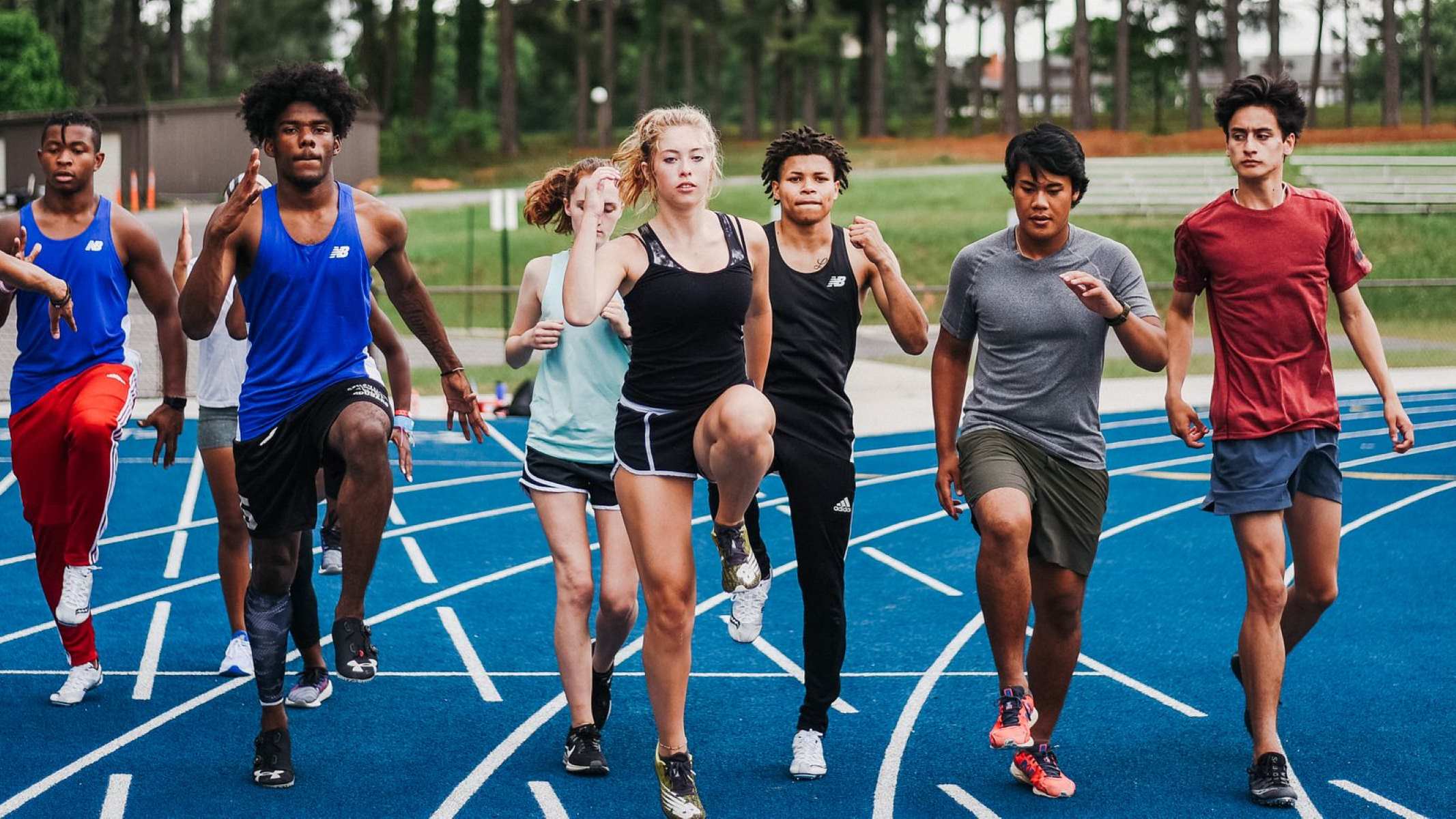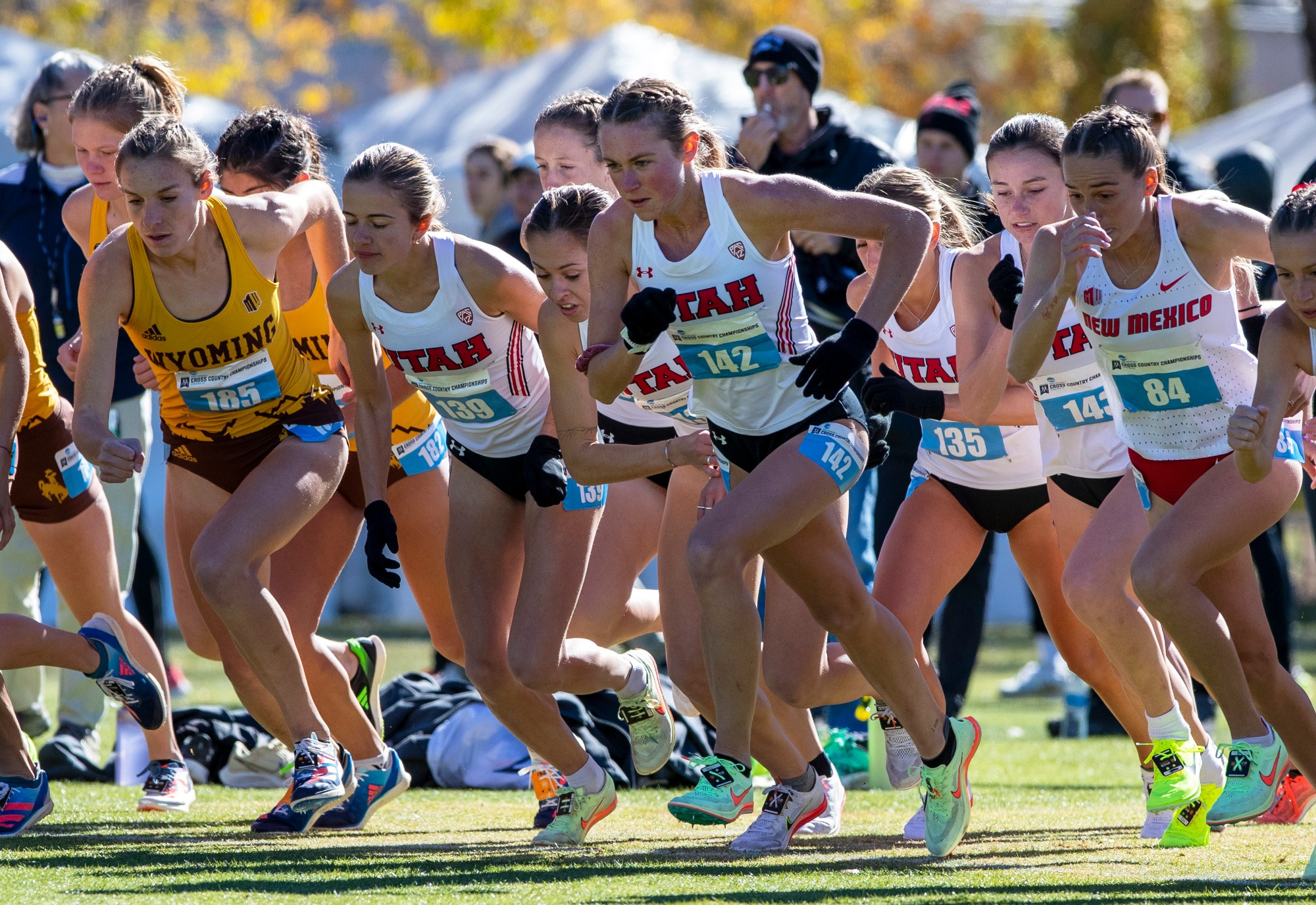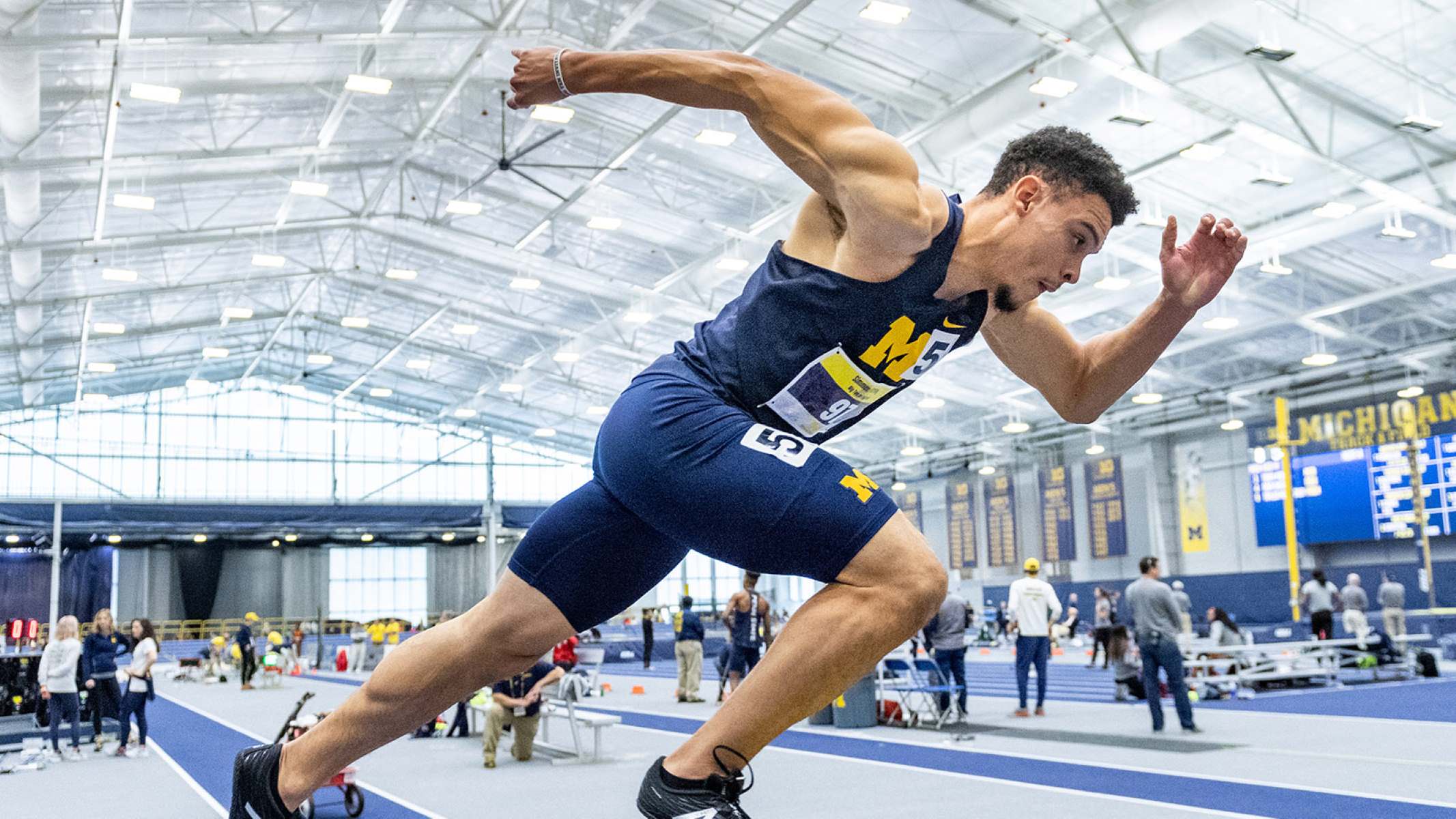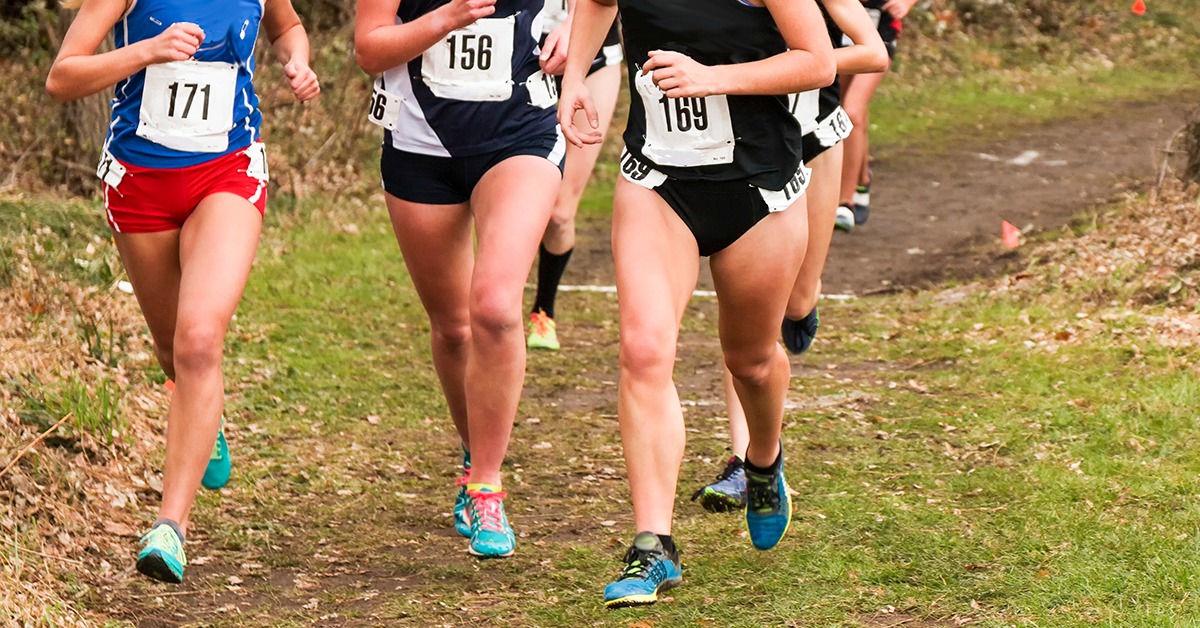Home>Misc>Featured>What Does It Take To Get A College Track And Field Scholarship


Featured
What Does It Take To Get A College Track And Field Scholarship
Modified: January 2, 2024
Discover what it takes to earn a college track and field scholarship. Learn about the featured requirements and opportunities in just a few steps!
Introduction
Competing in college track and field is a dream for many athletes. Not only does it provide the opportunity to continue honing your skills and achieving personal bests, but it also opens doors to receive a college track and field scholarship. This financial assistance can significantly alleviate the burden of tuition fees and other expenses, allowing student-athletes to fully focus on their athletic and academic pursuits.
However, securing a college track and field scholarship is no easy task. It requires dedication, hard work, and a strategic approach to the recruiting process. In this article, we will delve into what it takes to obtain a college track and field scholarship. From the necessary eligibility requirements to the recruitment process, we will provide you with all the information you need to navigate this exciting and competitive journey.
Before we dive into the specifics, it’s important to note that each college and university may have its own unique criteria for awarding track and field scholarships. It’s essential to research and understand the requirements of the schools you are interested in to maximize your chances of receiving financial aid.
In the following sections, we will discuss the eligibility requirements for track and field scholarships, including the academic and athletic criteria. We will also explore the college track and field recruiting process, including how to create a recruiting profile and communicate with college coaches. Additionally, we will highlight various track and field scholarship opportunities and provide tips for securing a track and field scholarship.
Through this comprehensive guide, we hope to equip you with the knowledge and tools necessary to navigate the college track and field scholarship process successfully. Whether you are a high school athlete looking to continue your athletic career in college or a current college student aiming to secure additional financial aid, this article is designed to assist you in achieving your dreams.
Understanding College Track and Field Scholarships
College track and field scholarships are awarded to student-athletes who demonstrate exceptional athletic ability and meet certain academic requirements. These scholarships provide financial assistance to cover tuition fees, room and board, and other expenses associated with attending college. However, it is important to note that not all track and field athletes receive full scholarships. Scholarships can range from full-ride packages to partial scholarships, depending on the individual athlete’s abilities and the resources available to the college or university.
Track and field scholarships are highly competitive, as there are a limited number of scholarships available and a large pool of talented athletes vying for them. Coaches carefully evaluate an athlete’s skills, potential, and accomplishments when determining who to award scholarships to. They consider various factors such as time and distance benchmarks, overall performance, event specialization, and competition results.
It’s worth mentioning that track and field scholarships are available for both men and women at the collegiate level. Colleges and universities typically offer both indoor and outdoor track and field programs, with athletes competing in events ranging from sprints and jumps to throws and long-distance races. The specific events in which an athlete excels can also play a role in the type of scholarship they receive.
Another crucial aspect of college track and field scholarships is the National Collegiate Athletic Association (NCAA) regulations. The NCAA is responsible for overseeing college athletics and enforcing eligibility rules. Understanding NCAA guidelines and compliance is essential for student-athletes who aspire to compete at the collegiate level and receive scholarships.
Overall, college track and field scholarships provide a unique opportunity for athletes to pursue their athletic and academic ambitions simultaneously. It allows student-athletes to excel in their sport while earning a valuable education. By understanding the fundamentals of college track and field scholarships, you can better navigate the recruiting process and increase your chances of securing financial aid to support your college journey.
Eligibility Requirements for Track and Field Scholarships
In order to be considered for a track and field scholarship, student-athletes must meet certain eligibility requirements. These requirements typically include both academic and athletic criteria. Let’s take a closer look at the key factors that colleges and universities consider when evaluating potential scholarship recipients.
1. Academic Requirements: Colleges and universities place a strong emphasis on academics when awarding track and field scholarships. While the specific GPA requirements may vary, maintaining a solid academic standing is essential. Student-athletes must meet the academic standards set forth by the institution and the NCAA. This often includes maintaining a minimum GPA and completing a certain number of core courses in high school.
2. Athletic Performance and Achievements: Demonstrating exceptional athletic ability and achieving notable performance in track and field events is crucial for scholarship consideration. Coaches assess an athlete’s times, distances, rankings, and overall performance to determine their potential contribution to the team. They also consider other accomplishments such as state championships, regional honors, and national rankings to evaluate an athlete’s level of competitiveness.
3. Physical Fitness and Potential: In addition to past performance, coaches also look for potential for growth and improvement. They assess an athlete’s physical fitness, strength, agility, and technical skills. Showing dedication to training, a strong work ethic, and the ability to continually improve can greatly enhance an athlete’s chances of securing a scholarship.
4. Character and Leadership: Colleges and universities value athletes who demonstrate strong character, leadership qualities, and a good work ethic. Leadership roles in track and field teams, involvement in community service, and positive recommendations from coaches and teachers can all contribute to an athlete’s appeal as a scholarship candidate.
It’s important to note that meeting these eligibility requirements is just the first step towards securing a track and field scholarship. The recruitment process is highly competitive, and colleges often have limited scholarship funds available. To maximize your chances of being awarded a scholarship, it’s essential to actively engage in the recruiting process, showcase your skills, and establish connections with college coaches.
By understanding the eligibility requirements and diligently working towards meeting them, you can position yourself as a strong candidate for a track and field scholarship. Remember, it’s not only about showcasing your athletic abilities but also demonstrating your commitment to academics and personal growth. Putting in the effort to meet these requirements will greatly increase your chances of receiving financial assistance to pursue your track and field dreams in college.
Academic Requirements
Academic performance plays a significant role in the evaluation process for track and field scholarships. Colleges and universities seek student-athletes who not only excel on the athletic field but also demonstrate a strong commitment to their education. Meeting the academic requirements is crucial to be considered for a track and field scholarship. Here are some key aspects of the academic requirements for track and field scholarships:
1. GPA: Most colleges and universities have minimum GPA requirements that student-athletes must meet to be eligible for scholarships. The specific GPA criteria can vary from institution to institution, so it is essential to research the academic standards of the schools you are interested in. Maintaining a high GPA demonstrates your dedication to academics and indicates your ability to balance the demands of sports and studies.
2. Core Course Requirements: The NCAA has specific requirements regarding the completion of core courses in high school. These core courses typically include subjects such as English, mathematics, science, and social studies. Student-athletes must successfully complete these core courses to meet the academic eligibility requirements set by the NCAA. It is crucial to work closely with your high school counselor to ensure you are on track to meet these requirements.
3. Standardized Tests: Standardized test scores, such as the SAT or ACT, are often considered in the evaluation process for track and field scholarships. While not all colleges and universities require standardized test scores for athletic scholarships, it is still beneficial to perform well on these exams. Strong test scores can enhance your overall application and demonstrate your academic abilities to college coaches.
4. Continued Academic Progress: Maintaining academic progress throughout high school is essential. College coaches look for student-athletes who consistently perform well academically, demonstrate growth in their studies, and take challenging courses. Showing an upward trend in your academic performance indicates your commitment to personal and intellectual growth.
It’s important to note that academic requirements are not solely limited to high school. Once you are in college, you must continue to meet the academic standards set by your institution and the NCAA to maintain your eligibility for scholarships.
As a student-athlete, it is crucial to prioritize your education along with your athletic pursuits. Balancing academics and athletics requires discipline, time management, and strong organizational skills. Developing effective study habits, seeking academic support when needed, and maintaining open communication with your coaches and academic advisors can help you succeed both on and off the track.
Meeting the academic requirements for track and field scholarships not only increases your chances of receiving financial assistance but also sets a foundation for your future academic and professional success. By prioritizing your education and excelling in the classroom, you demonstrate that you are a well-rounded and dedicated student-athlete deserving of the opportunities that come with a track and field scholarship.
Athletic Performance and Achievements
Athletic performance and achievements are key factors that college coaches consider when evaluating potential recipients for track and field scholarships. To be competitive in the recruitment process, student-athletes must demonstrate exceptional skills and a track record of success in their chosen events. Here are some important aspects to consider when it comes to athletic performance and achievements:
1. Event Specialization: College coaches look for athletes who excel in specific track and field events. Whether it’s sprints, jumps, throws, or distance running, showcasing your expertise in a particular event can significantly enhance your chances of receiving a scholarship. Specializing in an event helps coaches envision how you will contribute to their team’s success.
2. Performance Metrics: Coaches assess an athlete’s performance metrics, such as timed races, measured distances, or heights cleared, to evaluate their capabilities. Achieving competitive times and distances that align with college-level standards is essential. Setting personal bests, earning medals or titles at state or national level competitions, and consistently improving your performance are all factors that demonstrate your potential to succeed at the college level.
3. Training Dedication: Coaches are interested in athletes who showcase a strong work ethic and dedication to their training. Demonstrating discipline, consistency, and a willingness to push yourself in practice shows that you are committed to continuous improvement. Highlighting your training regimen, including any additional strength and conditioning work, can provide valuable insights to coaches about your commitment to excelling in your sport.
4. Competitive Experience: Participating in high-level competitions and earning recognition from reputable organizations or governing bodies can significantly boost your chances of receiving a track and field scholarship. Successful performances at regional or national championships, selection for prestigious teams or tournaments, and earning spots on regional or national rankings are all indicators of your competitive experience and potential.
5. Coach Recommendations: Strong recommendations from your track and field coach play a crucial role in attesting to your abilities as an athlete. A coach’s endorsement carries weight and can provide valuable insights into your work ethic, coachability, and potential for success at the collegiate level. Developing a positive and strong relationship with your coach can lead to a supportive recommendation that sets you apart from other candidates.
When striving for track and field scholarships, it’s important to remember that coaches are not only evaluating your current abilities but also your potential for growth and development. They are looking for athletes who have the drive and determination to continue improving and achieving success at the collegiate level.
By showcasing your athletic performance and achievements through measurable metrics, competitive experience, and the endorsement of your coach, you can position yourself as a highly desirable candidate for track and field scholarships. Experiences and accomplishments that demonstrate your commitment to excellence and your potential to contribute to a college team’s success significantly enhance your chances of securing financial aid for your track and field pursuits.
College Track and Field Recruiting Process
The college track and field recruiting process plays a crucial role in securing track and field scholarships. It involves actively engaging with college coaches, showcasing your abilities, and establishing meaningful connections with prospective schools. Understanding the various stages and strategies involved in the recruiting process is essential for positioning yourself as a top recruit. Here are the key steps involved in the college track and field recruiting process:
1. Research and Target Schools: The first step is to research and identify the colleges and universities that align with your academic and athletic goals. Consider factors such as location, competition level, coaching staff, facilities, and academic programs. Create a target list of schools that you’re interested in and that meet your criteria.
2. Create a Recruiting Profile: Develop a well-rounded recruiting profile that highlights your athletic achievements, academic standing, personal information, and contact details. Your profile should include information such as your track and field event specialization, personal best times or distances, academic transcript, standardized test scores, and coach’s contact information. It should also feature any relevant videos or links to your performance footage.
3. Attend Camps and Showcases: Participate in track and field camps, showcases, and clinics where college coaches are likely to be in attendance. These events provide opportunities to showcase your skills, receive personalized feedback, and establish connections with coaches. It’s important to perform your best at these events as coaches often use them to identify potential recruits.
4. Contact College Coaches: Take the initiative to contact college coaches and express your interest in their track and field program. Craft personalized emails or letters to introduce yourself, share your achievements, and express your desire to learn more about their program. Follow up with coaches, schedule campus visits, and attend their meets if possible. Building a rapport with coaches can help you stand out among other recruits.
5. Submit Applications and Transcripts: As you progress through the recruiting process, it is important to submit your applications to the colleges of your interest. Ensure that you meet all the academic requirements and deadlines set by the institutions. Arrange for your high school transcript to be sent to the schools and follow any additional application procedures required.
6. Coaches’ Evaluations and Offers: College coaches evaluate prospective recruits based on their recruiting profiles, performance at competitions, and observations during visits or meet attendance. If you meet the criteria and align with their program’s needs, coaches may extend scholarship offers. It’s important to carefully consider each offer and communicate with coaches to clarify any questions or concerns before making a decision.
Remember, the college track and field recruiting process is highly competitive, and coaches have limited scholarship funds available. Persistence, proactive communication, and showcasing your abilities are key to increasing your chances of receiving offers. Additionally, maintain open communication with your high school coach, seek guidance from your school’s athletic department, and stay organized throughout the entire process.
By navigating the college track and field recruiting process strategically and actively engaging with coaches, you can maximize your exposure and opportunities to secure track and field scholarships. Embrace the process with enthusiasm and persistence, and you will be on your way to achieving your goals as a student-athlete.
Creating a Track and Field Recruiting Profile
A well-crafted track and field recruiting profile is an essential tool for student-athletes looking to secure track and field scholarships. It serves as a comprehensive overview of your athletic achievements, academic standing, and personal information. Creating an effective recruiting profile can make a significant impact on coaches’ perceptions of your abilities. Here are some key elements to include when creating a track and field recruiting profile:
1. Personal Information: Start your profile with your personal details, including your full name, contact information, and relevant background information such as your height, weight, and date of birth. This section should also include your academic information, including your high school, graduation year, and any honors or awards you have received.
2. Athletic Achievements: Highlight your track and field achievements, including your event specialization and personal best times or distances. List any notable awards, championships, or records you have achieved during your athletic career. Include the names of the competitions you participated in and the year you achieved these milestones.
3. Academic Performance: Showcase your academic achievements by including your GPA, class rank, and any relevant academic honors or awards you have received. This section demonstrates your commitment to your studies and your ability to balance academics and athletics effectively.
4. Highlight Videos: Include video clips or links to your track and field performances. These videos should showcase your skills, technique, and athletic ability. Select videos that exhibit your best performances in various events, allowing coaches to assess your potential and performance under different conditions.
5. Coach Recommendation: Obtain a recommendation letter from your track and field coach. This letter should highlight your strengths, work ethic, coachability, and dedication to the sport. It adds credibility to your profile and provides insight into your character and abilities from a trusted source.
6. Contact Information: Include the contact information for your high school coach, club coach, and any other relevant contacts who can provide additional information about your athletic abilities. This allows college coaches to connect with those who have worked closely with you and gather more insights into your potential as a student-athlete.
When creating your track and field recruiting profile, it’s essential to provide accurate and up-to-date information. Regularly update your profile as you achieve new milestones or receive additional accolades. Keep in mind that coaches receive numerous profiles, so your profile should be concise, organized, and visually appealing to catch their attention.
Once your profile is complete, share it with college coaches by sending personalized emails or uploading it to recruiting platforms. Remember to follow up with coaches and express your interest in their program. Actively engaging with coaches and showcasing your abilities through your recruiting profile can significantly enhance your visibility and increase your chances of securing track and field scholarships.
By creating a comprehensive and compelling track and field recruiting profile, you present yourself as an attractive candidate to college coaches. A well-crafted profile allows coaches to assess your athletic abilities, academic achievements, and potential contributions to their team. Put in the effort to create a standout profile, and you will increase your chances of attracting the attention of coaches and securing track and field scholarships.
Communicating with College Coaches
Effective communication with college coaches is a key component of the track and field recruiting process. It allows you to showcase your abilities, express your interest in their program, and establish a connection that can increase your chances of securing a track and field scholarship. Here are some important guidelines to consider when communicating with college coaches:
1. Initiate Contact: Take the initiative to reach out to college coaches. Craft personalized emails or letters expressing your interest in their track and field program. Introduce yourself, highlight your athletic achievements, and explain why you are interested in their program specifically. Show your enthusiasm and let the coaches know that you have done your research on their program.
2. Be Professional: Maintain a professional and respectful tone when contacting coaches. Use proper salutations and grammar in your emails. Avoid text language or slang, as it may come across as unprofessional. Treat your communications with coaches as you would any professional interaction.
3. Provide Relevant Information: Share relevant information about your track and field achievements, including your personal best times or distances, event specialization, and notable accolades. Include any upcoming competitions or showcases that coaches may be interested in attending to see you perform. Be concise and organized in presenting your information.
4. Follow Up: If you don’t receive an immediate response, don’t be discouraged. Coaches are often busy and receive numerous inquiries from student-athletes. Politely follow up on your initial contact after a reasonable period, reiterating your interest in their program and expressing a desire to learn more about their track and field team.
5. Schedule Visits: When appropriate, express your interest in visiting the college campus and meeting with the coach in person. Campus visits provide an opportunity for you to assess the overall environment, facilities, and academic offerings of the institution. It also allows coaches to get a better sense of you as an individual and a potential fit for their team.
6. Respond Promptly: When coaches reach out to you, respond to their inquiries and requests in a timely manner. This demonstrates your professionalism, interest, and respect for their time. Be proactive in providing any additional information or documentation they may request.
7. Be Respectful of the Recruiting Process: Understand that coaches have limitations regarding the number of scholarships they can offer and the athletes they can recruit. Be respectful if a coach informs you that they are not able to offer you a scholarship. Thank them for their consideration and keep exploring other opportunities that may align with your goals.
Remember, effective communication with college coaches is a two-way street. It is not only about showcasing your abilities and interest but also about listening and learning from the coaches. Be open to their feedback and guidance throughout the recruiting process.
By communicating professionally, showcasing your abilities, and demonstrating genuine interest in their program, you can build meaningful connections with college coaches. Effective communication can significantly increase your chances of standing out among other recruits and ultimately secure a track and field scholarship.
Track and Field Scholarship Opportunities
Track and field scholarships can provide student-athletes with the financial support necessary to pursue their athletic and academic aspirations. Various organizations and institutions offer scholarship opportunities specifically for track and field athletes. Understanding these opportunities can help you identify potential sources of financial aid for your college journey. Here are some common track and field scholarship opportunities:
1. NCAA Scholarships: The National Collegiate Athletic Association (NCAA) is the governing body for college athletics in the United States. NCAA schools offer a range of scholarships for track and field athletes, including full-ride scholarships and partial scholarships. These scholarships are highly competitive, and they are awarded based on an athlete’s abilities, academic performance, and potential.
2. Conference Scholarships: Many athletic conferences within the NCAA, such as the Big Ten, SEC, and Pac-12, provide scholarship opportunities for track and field athletes. These scholarships are often awarded by the individual conferences and can vary in terms of the number of scholarships available and the criteria for selection. Research the conference scholarships offered by the schools you are interested in.
3. University Scholarships: Apart from NCAA and conference scholarships, many colleges and universities have their own scholarship programs for track and field athletes. These scholarships may be merit-based, need-based, or a combination of both. It is essential to research the scholarship programs offered by your target colleges and universities to determine whether you qualify and how to apply.
4. Track and Field Associations and Clubs: Regional and national track and field associations, as well as athletic clubs, often provide scholarship opportunities for talented athletes. These scholarships may be based on performance in specific events or overall athletic achievement. Research the track and field associations and clubs in your area to discover potential scholarship opportunities.
5. Private Scholarships: There are also private organizations, foundations, and companies that offer scholarships to track and field athletes. These scholarships may have specific criteria, such as a particular track and field event, academic standing, or community involvement. Conduct a thorough search for private scholarship opportunities through online scholarship databases, community organizations, and local businesses.
It’s important to note that scholarship availability and criteria can vary widely. Each school or organization sets its own guidelines for awarding scholarships. It is crucial to research and understand the requirements and deadlines for each scholarship opportunity to maximize your chances of receiving financial aid.
Additionally, keep in mind that in some cases, track and field scholarships may be renewable, meaning they can be awarded for multiple years if the athlete continues to meet the necessary criteria. This can provide significant financial support throughout your college career.
Ultimately, actively searching and applying for a variety of track and field scholarship opportunities can increase your chances of receiving financial assistance for your athletic and academic pursuits. Explore all available options, stay organized, and thoroughly complete scholarship applications to maximize your opportunities for securing funding as a track and field athlete.
Financial Aid and Scholarships
Financial aid and scholarships are crucial resources for student-athletes pursuing a college education while participating in track and field. Understanding the various types of financial aid options and scholarships available can help alleviate the financial burden and make your college education more affordable. Here are some of the common forms of financial aid and scholarships for track and field athletes:
1. Need-Based Financial Aid: Need-based financial aid is awarded to students based on their financial need as determined by federal and institutional calculations. This type of aid may include grants, work-study programs, and low-interest loans. Filling out the Free Application for Federal Student Aid (FAFSA) serves as the gateway for determining your eligibility for need-based aid.
2. Athletic Scholarships: Athletic scholarships, including track and field scholarships, are awarded to student-athletes based on their athletic abilities and potential contribution to the college’s track and field team. These scholarships can cover various expenses such as tuition, room and board, and textbooks. Athletic scholarships are typically renewable each year, contingent upon meeting the athletic and academic requirements set by the college or university.
3. Academic Scholarships: Academic scholarships are awarded based on the student’s academic achievements, such as high GPA, standardized test scores, and class rank. Many colleges and universities offer academic scholarships to attract academically talented students to their institutions, even if they are not participating in the track and field program. Ensure you meet the academic requirements of each institution to be eligible for these scholarships.
4. Merit-Based Scholarships: Merit-based scholarships can be awarded to students who demonstrate exceptional abilities, talents, or achievements outside of academics or athletics. These scholarships are often based on a student’s accomplishments in areas such as community service, leadership, or artistic endeavors. Research specific scholarships offered by colleges, organizations, or private foundations that recognize your unique achievements.
5. Grants: Grants are another form of financial aid that does not have to be repaid. They are usually awarded based on financial need or specific criteria set by the granting organization. Grants can be offered through federal, state, or institutional programs and can significantly reduce the cost of college expenses.
Remember to thoroughly research the financial aid options and scholarships offered by the colleges and universities you are interested in. Pay attention to deadlines and ensure that you complete all required application materials accurately and on time.
It’s also important to note that financial aid and scholarship packages can vary from one college to another. As you receive scholarship offers, carefully review and compare the terms and conditions of each offer. Consider the total cost of attendance, renewal requirements, and the length of the scholarship eligibility when making your decision.
By seeking out and applying for various forms of financial aid and scholarships, you can significantly reduce the financial burden of attending college while participating in track and field. Take advantage of the opportunities available to you and invest time and effort in securing financial assistance to support your educational journey.
Tips for Securing a Track and Field Scholarship
Securing a track and field scholarship requires diligent preparation, strategic planning, and proactive engagement with college coaches. As you navigate the recruiting process, consider the following tips to increase your chances of securing a track and field scholarship:
1. Start Early: Begin your track and field recruiting process early. Research colleges, understand their athletic programs, and identify schools that align with your academic and athletic goals. The earlier you start, the more time you have to develop and enhance your skills, as well as build relationships with college coaches.
2. Focus on Academic Excellence: Maintain a high GPA and meet the academic standards set by the NCAA and your target colleges. Strong academic performance not only makes you a more attractive candidate but also opens up additional scholarship opportunities, such as academic scholarships or grants.
3. Develop a Strong Athletic Profile: Create a comprehensive track and field recruiting profile that highlights your achievements, personal bests, event specialization, and coach recommendations. Include video footage showcasing your skills and performances at competitions. Your profile should be well-organized, concise, and visually appealing.
4. Attend Competitions and Showcases: Participate in high-level competitions and showcases where college coaches are likely to be in attendance. This provides an opportunity to showcase your abilities, connect with coaches, and receive valuable feedback. Performing well at these events can significantly boost your chances of catching the attention of college coaches.
5. Be Proactive in Contacting Coaches: Take the initiative to reach out to college coaches and express your interest in their track and field program. Personalize your communication, highlighting why you are interested in their program, and how you believe you can contribute to the team’s success. Follow up with coaches and maintain open lines of communication throughout the recruiting process.
6. Utilize Online Recruiting Platforms: Explore online recruiting platforms that connect student-athletes with college coaches. These platforms allow you to create a recruiting profile, showcase your abilities, and directly communicate with coaches. Make sure your profile is up-to-date and regularly check for any messages or inquiries from coaches.
7. Stay Active on Social Media: Use social media platforms strategically to showcase your achievements, training progress, and involvement in the track and field community. Share videos and photos of your performances, tag coaches and relevant accounts, and engage with the track and field community to increase your visibility.
8. Attend College Camps and Visits: Participate in college camps and schedule visits to campuses to meet with coaches, tour facilities, and get a feel for the school’s environment. These experiences allow you to establish personal connections, demonstrate your enthusiasm, and gain a better understanding of the program and its expectations.
9. Seek Guidance and Advice: Reach out to your high school coach, athletic director, or guidance counselor for guidance throughout the recruiting process. They can provide valuable insights, advice, and assistance in connecting with college coaches and understanding the requirements and expectations of the process.
10. Stay Persistent and Positive: The recruiting process can be challenging, and you may face rejections or setbacks along the way. Stay persistent, maintain a positive attitude, and continue to improve your skills and performance. Keep in mind that the right opportunity will come if you remain dedicated and focused.
By following these tips and staying committed to your goals, you can increase your likelihood of securing a track and field scholarship. Remember, the recruiting process is a journey that requires patience, hard work, and perseverance. Stay true to yourself and strive for excellence both on and off the track as you pursue your dreams of becoming a collegiate track and field athlete.
Conclusion
Securing a track and field scholarship is an exciting and rewarding endeavor that requires dedication, perseverance, and strategic planning. By understanding the eligibility requirements, excelling academically, and showcasing your athletic abilities, you can position yourself as a strong candidate for scholarships. Engaging in the college track and field recruiting process, creating a compelling recruiting profile, and effectively communicating with college coaches are essential steps to increase your chances of receiving financial aid.
Researching scholarship opportunities, such as NCAA scholarships, conference scholarships, and private scholarships, can open doors to additional financial support. Understanding the types of financial aid available, such as need-based aid, athletic scholarships, and academic scholarships, can help alleviate the financial burden of pursuing a college education. By taking advantage of these opportunities, track and field athletes can pursue their athletic and academic ambitions without sacrificing their financial well-being.
Throughout the recruiting process, it is important to stay proactive, start early, and maintain strong communication with college coaches. By attending competitions and showcases, building a strong recruiting profile, and leveraging online platforms and social media, you can increase your visibility and stand out in the highly competitive world of track and field recruitment.
Remember, securing a track and field scholarship requires dedication, perseverance, and resilience. Stay focused on your goals, remain positive in the face of challenges, and continually strive for improvement in both your athletic and academic pursuits. Embrace the recruiting process as an opportunity for personal and athletic growth, and trust that your hard work and dedication will pay off in the pursuit of your track and field dreams.
Now armed with knowledge and understanding, go confidently forward, prepared to excel in both the sport you love and the educational journey that awaits you as a student-athlete. Good luck on your path to securing a track and field scholarship and pursuing your dreams as a collegiate track and field athlete!








